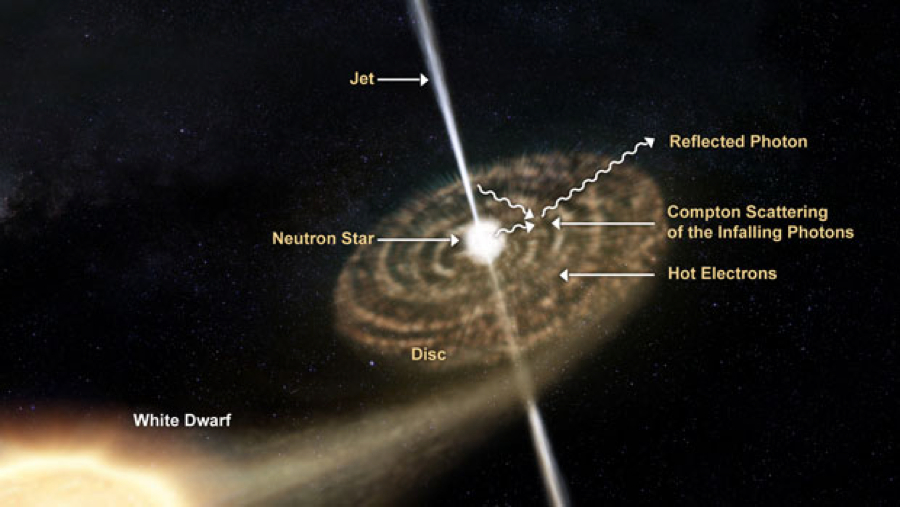
 Credit: ESA
Credit: ESA
Ultracompact Oxygen
Ultracompact binary stars are those containing two compact objects, like a neutron star bound with another neutron star, a neutron star plus a black hole, or, in the case of the system 4U 0614+091, a neutron star bound to a white dwarf star. These stars have extremely short orbital periods - in the case of 4U 0614+091, the white dwarf orbits the neutron star every 80 minutes. Ultracompact binaries represent the end product of a binary star evolution, and are important test cases of theories of extreme gravity. Perhaps 4U 0614+091 started out as a relatively cool sun-like star coupled with a much more massive companion. The more massive companion would evolve first and explode as a supernova, producing a neutron star, while the solar-type star would evolve much later, shedding its atmosphere as a planetary nebula and leaving behind a white dwarf. But binary star evolution can be more complicated than single star evolution due to mutual interactons between the two stars. So, for example, 4U 0614+091 might have evolved as two white dwarfs, but one of the white dwarfs could have perhaps stripped enough material from its companion to push it over the edge to collapse into a neutron star. In fact, at present the neutron star in 4U 0614+091 is stripping material from the white dwarf companion, producing a hot accretion disk plus two powerful jets, as shown in the artist conception above. X-rays produced by this hot flow of material onto the neutron stars allow astronomers to probe the physical conditions of this material under the extreme gravitational stress of the neutron star. Using the XMM-Newton X-ray observatory, astronomers have recently found emission from highly distorted oxygen atoms from material very near the surface of the neutron star. The properties of this atomic emission can give astronomers a detailed measure of the gravitational field of the neutron star, and help define its mass and radius.
Published: June 28, 2010
<
HEA Dictionary ● Archive
● Search HEAPOW
● Other Languages
● HEAPOW on Facebook
● Download all Images
● Education ● HEAD
>

Each week the HEASARC
brings you new, exciting and beautiful images from X-ray and Gamma ray
astronomy. Check back each week and be sure to check out the HEAPOW archive!
Page Author: Dr. Michael F. Corcoran
Last modified Monday, 26-Feb-2024 17:20:02 EST


